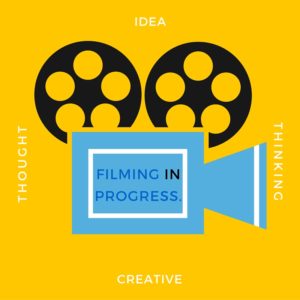The Life Cycle of TV Commercials
The advertising landscape has changed a lot in the past 10 years, but TV Commercials are still a driving factor in marketing. To younger generations, they're a part of everyday life, something that seems to have always just been. Nowadays, everyone has a video camera in the palm of their hands — which can lead to thinking that TV spots are simple to create. The truth? The life cycle of a TV commercial is actually a complex creative process. Understanding more about the process of making a TV commercial can give you new insight on how complex media gets to viewers.
The Idea
The first step in the creation process is sparking The Idea. (Even the commercials that make you groan out loud because they're JUST.SO.BAD. had to originate from someone's mind!) Coming up with an idea that sells a product or idea to the viewer is an artistic craft. Think how many times an idea in your head does not translate to paper... Finding the right art director to craft your message is key to getting return on investment for your TV commercial. Big brands spend lots of time and money (think Super Bowl) on crafting great TV ads.
The Script
No matter how great an idea might seem, the next step will make or break whether that idea gets wings. When developing the script for a TV commercial, you need to think about your audience — how will you relate to them? How will you "hook" them? What tone will the TV spot take? Forming a script takes a special mind who understands writing, marketing, and television all at the same time. Just like a movie script, a TV commercial script can go through many rewrites and can take awhile to get right. A lot can be packed into that :30 or 1:00 time slot! 10 seconds of video can be complicated if you're in the shower then riding a horse.
The Storyboard
Once the commercial has been scripted, a storyboard is created that indicates all the nuts and bolts of the production — the location, the shots necessary, the VO, music, actors — everything that will be in the story of the commercial. A storyboard is a visual representation of what the live action shots will look like before money is spent on filming. This is an important part of the process as it brings together all the creative elements and gets everyone working on the same creative page BEFORE active production. Good productions anticipate problems or hurdles while they are in the planning phase on paper, so on location efforts go smoothly.
Casting
Casting is a critical element of a TV commercial. If a production centers around a star personality, it can be done pretty early in the production process. Finding that right person to talk about your product or brand is critical to gathering responses from viewers. Casting agents, art directors and production specialists all weigh in on the process. As is true in other advertising, thinking about the target demographic, the viewer, and what action you'd like them to take after viewing all play key roles in who gets cast for a production. Even if there are no live bodies in the TV commercial, you may need to cast a voice over artist using the same considerations. Although it's fine for some projects to pull in up-and-coming actors or voice over artists, certain ad campaigns look for more experienced talent that is more widely known.
Filming
Filming. Day of production. Also called principal photography. All of the hard work up to this point has lead to this: recording the commercial. Depending on the length, number of scenes, production value and complexity a commercial can take days to weeks to record. Key to know about production? If you have a good storyboard and production manager, you will come in on time and on budget. Two things that are extremely important given that production overruns can be costly.
Editing
Editing is a critical phase where all the elements come together to finish the creative vision that was set in the very beginning. Post-production editing puts together the best takes of each scene, overlays any special effects, animations, and transitions as well as embeds sound and music to creates a coherent story that should match your storyboard. (Some people will tell you that editing is the most important part of the commercial — unless you're a cinematographer, then photography is more important — or you're an actor, then the scene work is most important... Well, you get it. It's all important.)
 Distribution
Distribution
TV commercials take coordination of talent, hard work and money so getting it into the right hands is critical. Viewing goals can vary — brand awareness, sales of a new product, adoption of a new style — so it's important to get a TV spot distributed correctly. Media buyers are experts in this phase and can target audiences appropriately. They should be able to discuss metrics on viewers and ad placement and how the success of the spot will be measured. It is important to note that the cost of air time for an average commercial spot can be more than the actual production of the commercial, so budget appropriately for this step.
Conclusion
In general terms, a TV commercial life cycle can take one to three months to complete, but that can be longer (or shorter!) depending on logistics. 30 second TV spots are still one of the most popular ways to increase sales and gain brand recognition. Contact us today to find out how we can help make your commercial stand out.
